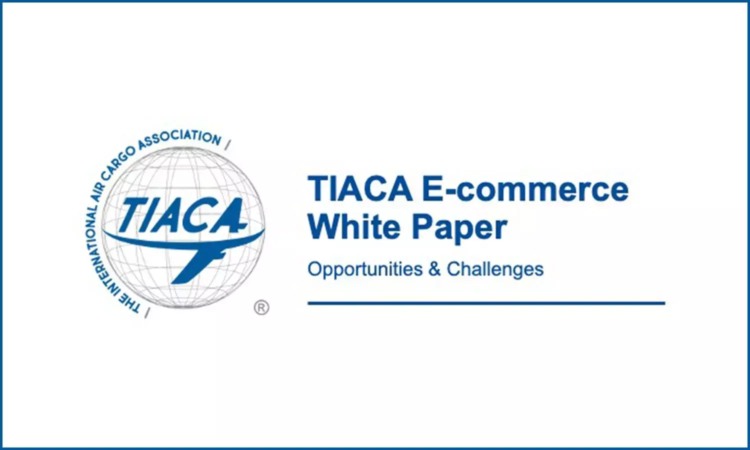The International Air Cargo Association (TIACA) has published its first dedicated white paper on e-commerce, offering what it calls a “comprehensive roadmap” for the industry to navigate one of the most transformative forces shaping global logistics.
Titled “E-Commerce: Opportunities & Challenges”, the 16-chapter report examines the sector’s rapid expansion and the operational, regulatory, and infrastructural changes required to keep pace. According to TIACA, e-commerce accounted for roughly 20% of global air cargo volumes by the end of 2024, and forecasts suggest this figure could double within the next decade.
The surge has been fueled by COVID-driven shifts in consumer behavior and the growth of cross-border trade, creating both opportunities and structural challenges for airlines, airports, ground handlers, freight forwarders, and regulators.
A Multi-Stakeholder Effort
The white paper was developed by TIACA’s E-Commerce Task Force, a cross-sector group comprising airlines, airports, technology providers, freight forwarders, ground handlers, and industry analysts. It provides insights into operational bottlenecks and policy gaps while setting out recommendations for collaboration and harmonization across the supply chain.
“E-commerce is not just a new cargo product – it’s a paradigm shift in how the air logistics sector operates,” said Steven Polmans, Chair of TIACA. “This white paper provides actionable policy recommendations, best practices, and a collaborative roadmap to ensure that we as a global community are prepared for the next phase of growth.”
Key Areas of Focus
The report highlights several priority areas:
- Market Outlook – Tracking demand trends, growth projections, and shifting trade lanes.
- Safety & Security – Addressing risks such as lithium batteries, cyber threats, and fragmented regulatory frameworks.
- Customs & Border Management – Enhancing efficiency in clearance while tackling fraud and misdeclaration.
- Process Simplification & Data Harmonization – Building interoperable digital systems to improve transparency and efficiency.
- Operational Challenges – Helping airlines, handlers, and freight forwarders adapt to smaller, high-frequency shipments.
- Final-Mile & Reverse Logistics – Exploring sustainable technologies and practices for delivery and returns.
- Innovation & Sustainability – Leveraging AI, drones, and green solutions to balance growth with environmental commitments.
“Our industry is at a crossroads. By embracing digitalization, innovation, and cross-sector collaboration, we can transform e-commerce air logistics into a safer, greener, and more efficient ecosystem,” said Nikolai Schaffner of Swissport, co-chair of the E-Commerce Task Force.
Building a Sustainable Future
The report emphasizes the need for both industry-wide and regulatory alignment, particularly as governments and international organizations develop frameworks to address the growing complexities of cross-border e-commerce.
“This white paper is a vital step in helping our industry navigate the rapid rise of e-commerce,” said Glyn Hughes, Director General of TIACA. “Together, we are charting a path toward safer, smarter, and more sustainable e-commerce air logistics that takes into account evolving regulations and consumer behavior.”
Industry Impact
By laying out clear recommendations on regulation, digital standards, infrastructure, and innovation, TIACA hopes the report will serve as a reference point for stakeholders worldwide. The white paper positions e-commerce not merely as a high-growth segment of air cargo, but as a catalyst for systemic change across global logistics.





